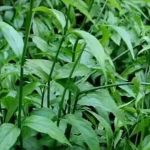Centuries ago, spiritual communities cultivated spaces that blended nourishment with meaning. These walled green areas—often designed around sacred architecture—served as early laboratories for understanding plants. Today, their legacy lives on in our pursuit of nutrient-packed superfoods.
Historical records like the St. Gall plan show these spaces weren’t just for growing vegetables. They featured symbolic layouts with fountains and geometric patterns, reflecting a balance between body and soul. Monks studied herbs like lavender and sage, documenting uses we still reference.
What makes these gardens truly special? They preserved botanical knowledge through uncertain times. Over 1,000 years ago, caretakers organized species into sections for cooking, healing, and contemplation. This system allowed rare plants to survive wars and plagues.
Modern nutritionists now recognize many “discoveries” from these green sanctuaries. For example, elderberry—once used in tonics—boasts immune-supporting antioxidants. Even the concept of seasonal eating traces back to these self-sufficient communities.
As we explore current food trends, it’s clear our ancestors understood nature’s pharmacy better than we realized. Their practical wisdom, rooted in careful observation, still shapes how we approach wellness today.
Historical Evolution of Monastery Gardens
Long before modern agriculture, spiritual communities shaped green spaces with purpose. Their designs blended practicality with deeper meaning, creating blueprints we still study today. Let’s dig into how these layouts evolved and why they mattered.

Geometry Meets Spirituality
Early garden plans reveal more than farming techniques. The famous St. Gall manuscript shows four-part designs mirroring spiritual concepts. Central fountains symbolized life’s source, while pathways formed crosses. These spaces weren’t just pretty—they taught through design.
Quadrants separated plants by use: cooking, healing, prayer, and beauty. Excavations show rosemary grew near infirmaries, its scent masking illness. Lavender bordered walkways, calming minds during meditation. Every leaf had a role.
Living Libraries of Green
Religious communities became unexpected heroes of plant conservation. During political chaos, they safeguarded rare species like saffron and verbena. Detailed records from the 9th century list over 100 herbs with uses we still validate.
Monks exchanged seeds with travelers, creating early plant databases. Their work preserved knowledge from Roman and Arab traditions. This cross-cultural exchange let thyme survive wars and chamomile outlast empires.
Today’s herb gardens owe much to these efforts. The same basil varieties that seasoned 12th-century soups now top pizzas. History’s quiet gardeners gave us tools we’re still rediscovering.
Medieval Monastery Gardens: Superfood Foundations
Hidden beneath ivy-covered walls, early horticulturists developed plant-care practices we’re still unpacking. Their walled green spaces blended science and spirituality, creating a blueprint for today’s superfood movement.

Nature’s Original Pharmacy
Twelfth-century manuscripts reveal meticulous plant categorization. Growers grouped species into three zones: kitchen staples, healing herbs, and symbolic flowers. Mint treated digestion near vegetable plots, while calendula healed wounds closer to infirmaries.
Records like Hildegard of Bingen’s Physica detail uses for 230 plants. Many remain relevant—chamomile for sleep, garlic for immunity. These medicinal plants formed Europe’s first organized healthcare system.
From Stone Walls to Supermarket Shelves
Modern chefs and nutritionists unknowingly echo old-world wisdom. Turmeric lattes mirror golden milk recipes from 14th-century apothecaries. Kale’s resurgence mirrors its role as a hardy winter crop in northern herb gardens.
Three key connections bridge eras:
- Seasonal eating patterns from crop rotation manuals
- Fermentation techniques preserving nutrients
- Biodiversity principles protecting rare species
Next time you sprinkle rosemary on roasted veggies, remember—you’re using a trick from 800-year-old kitchen gardens. Our ancestors’ trial-and-error methods created a food legacy we’re just beginning to appreciate fully.
Monastic Agricultural Techniques and Sustainable Practices
Centuries-old farming secrets are resurfacing in today’s eco-conscious agriculture. Spiritual communities perfected earth-friendly methods long before synthetic fertilizers existed. Their approaches balanced productivity with environmental care—a lesson we’re relearning now.
Organic Methods and Crop Rotation in the Middle Ages
Early growers relied on nature’s rhythms to sustain their plots. They rotated crops across three fields: one for grains, one for legumes, and one resting. This three-field system prevented soil exhaustion and reduced pests naturally.
Compost made from kitchen scraps and animal waste enriched the earth. Local plant varieties thrived because they adapted to regional conditions. Records show peas and beans fixed nitrogen in soil—a process scientists only explained centuries later.
Archaeological Discoveries Informing Modern Cultivation
Recent digs at historic sites reveal advanced irrigation networks. Channels diverted rainwater to thirsty plants, while raised beds prevented root rot. These techniques mirror modern permaculture designs.
Researchers also found evidence of companion planting—basil grown near tomatoes to deter insects. Such discoveries prove our ancestors understood ecosystems better than we assumed. Their methods offer blueprints for:
- Reducing chemical inputs
- Preserving heirloom species
- Building drought-resistant gardens
Farmers today combine these time-tested strategies with new technology. The result? Healthier soils and tastier harvests—just like those enjoyed in quiet cloisters eight hundred years ago.
Modern Nutrition Meets Medieval Wisdom
Farmers markets and wellness blogs now buzz with techniques from an unexpected source: age-old horticultural traditions. Nutritionists are rediscovering what early growers knew—health begins in the soil. This revival blends historical wisdom with cutting-edge science, creating smarter ways to eat.
Integrating Traditional Practices into Today’s Superfoods
Your kale salad owes a debt to 12th-century growers. They perfected companion planting—pairing plants that protect each other—long before organic certifications existed. Modern farms now use these methods to grow antioxidant-rich foods without synthetic chemicals.
Unlike 19th-century industrial farms that prioritized quantity, today’s growers focus on nutrient density. Heirloom vegetables like purple carrots and black tomatoes thrive in small plots, just as they did in walled green spaces centuries ago. Even trendy microgreens trace their roots to medicinal herb beds.
Three practices bridge past and present:
- Seed-saving networks preserving rare varieties
- Fermentation techniques boosting gut health
- Local food systems reducing waste
Next time you sip golden milk turmeric latte, remember—its main ingredient traveled from ancient apothecaries to your mug. Our ancestors’ herb garden wisdom still flavors modern plates, proving good nutrition never goes out of style.
Conclusion
Our journey through time reveals how ancient green spaces shaped today’s plates. Those quiet cloister gardens weren’t just pretty—they were living classrooms. Growers mixed practical skills with ecological wisdom, creating systems we’re still learning from.
Historical layouts taught us to pair plants for mutual benefit. Rotating crops kept soil healthy long before “sustainability” became trendy. Every herb garden served as a pharmacy, kitchen, and meditation space rolled into one.
Today’s food trends mirror this old-world thinking. Heirloom vegetables thrive in backyard plots, just like they did centuries ago. Seed-saving networks preserve rare species, while fermented foods boost gut health using methods perfected long ago.
Want to eat like a modern superfood explorer? Start by looking back. Plant a small vegetable patch using companion techniques from walled gardens. Choose plants that nourish both body and soul—just as early caretakers did.
Next time you snack on kale chips or sip herbal tea, remember—you’re tasting flavors shaped by generations of green-thumbed wisdom. The past isn’t just history—it’s a recipe for better living.
Learn more about the medicinal properties of:
- Chamomile
- Basil
- Calendula
- Carrots
- Elderberry
- Garlic
- Kale
- Lavender
- Mint
- Rosemary
- Saffron
- Sage
- Thyme
- Tomatoes
- Turmeric
- Verbena



















